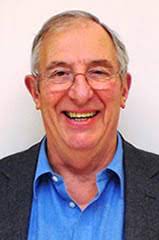After one of ICL's periodic reorganisations I discovered I had been posted to the newly established Management Support Business Centre. I had recently embarked on a management consultancy career so I was interested to find out what was expected of me. My colleagues were a mixed bunch from all around the Company and, since they were all pretty smart, there was no risk of "being in the wrong room".
Despite having chosen the "professional" (i.e. non-management) career path, I found that I had someone to manage or, as it transpired, mentor. People in the know said to me, "Oh, bad luck, they've given you Robin - he's a right screwball." Robin Seward had had a relatively undistinguished ICL career but, as I had, he'd taken the opportunity to do a variety of different jobs, including a spell working for ICL in the West Indies.
We hit it off right away. Robin had a great sense of humour and I soon discovered he was one of the most creative people I have ever met. The reason people thought he was a screwball was that they didn't understand him. We shared an extensive vocabulary, not just of words but of concepts; in a ten minute conversation with Robin I could cover as much ground as half an hour with most other people. In consequence, conversations with Robin were often exhausting.
We had a highly productive relationship, the major fruit of which was the ICL pod. This was an octagonal meeting room equipped with the latest in (1985) information technology so that particpants in meetings could have the information they needed to debate the issues projected onto screens on the walls. Robin was also well connected in academia but in areas that didn't overlap with mine, so the pod reflected both streams of thought. In one corner was a workstation in which a support engineer could access and manipulate information and displays to aid the discussion (colloquially referred to as "playing the organ").
When Robin and I first came up with the idea we had no expectation that it would ever be built and we were astonished when our funding application was nodded through. We collaborated with an upmarket office furniture and decor supplier and we managed to put the prototype in place in three or four months. Its first ever use was for an ICL Board Meeting and Robb Wilmot, our CEO at the time, was impressed. He encouraged us to approach major accounts with a view to installing further prototypes and again, so my surprise, we were successful - no doubt his personal backing carried a lot of weight. Several pods were installed, including one at the LSE. I visited this a number of years later and it was being using for, I think, MBA teaching about behaviour in meetings.
This is not the place to go into a lot of detail but, if you would like to read more, I published a paper in the ICL Technical Journal which provides it. You can find it at https://www.fujitsu.com/ie/imagesgig5/ICL-Technical-Journal-v05i02.pdf
PS This link now appears not to work. If you would like a copy of the paper message me and I'll email it to you.



